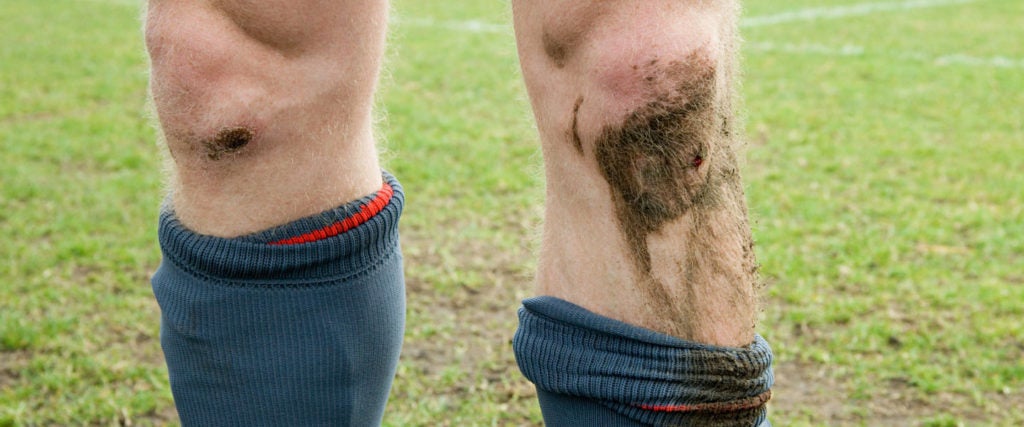Not that you should ever accept medical advice from a man smoking cigarettes in a faded “REHAB is for quitters” cut-off T-shirt, but our coach was the closest thing my youth baseball team had to a medical expert. Given his limited expertise, most of his medical advice boiled down to the same two youth-sports canards: Elbow bleeding after a close play at second? Rub some dirt on it. Sore ankle after colliding with the catcher? Walk it off.
And while I like to think I’ve matured enough not to rub dirt on my wounds, this advice must have come from somewhere, right? How else would it seem at least plausibly medically sound enough to pass on for decades? But like my old coach, I’m no doctor either, and so I enlisted three actual MDs to weigh in on whether “walk it off” and “rub some dirt on it” have any grounding whatsoever in medical science.
On Walking It Off
Alti Iftikhar, a physician in Florida specializing in sports medicine: That old adage of “walk it off” actually does hold some weight today. Years back, when someone would have a sprained ankle or “tweaked” something, we’d always tell them to “rest it” and not use it. Well, we’ve come a ways from that advice. Even for some fractures, like of the finger or arm, we encourage patients to keep the range of motion going.
John Martinez, medical director of the U.S. Paralympic triathlon team: Early mobilization or movement of minor strains and sprains decreases swelling and maintains good range of motion of the joint, so “walking it off” could be appropriate depending on the severity of the injury.
On When to Stop Walking It Off
Leann Poston, a physician in Ohio: If the pain lasts more than a few minutes, or there is immediate bruising or swelling, then don’t try to walk it off. Rest, ice and compression would be better.
Martinez: A good rule of thumb is, if the injury is too painful, don’t force the movement since you may be causing more damage to the joint or the muscle.
Poston: Also, walking isn’t going to do anything for injuries to the head; immediate rest is a better strategy.
On Rubbing Some Dirt on It
Martinez: Rubbing dirt on scrapes, cuts or abrasions is never a good idea, since the dirt can introduce bacteria that can potentially cause an infection.
Iftikhar: Please don’t rub dirt on anything.
On Rubbing It Without Dirt
Poston: Though it sounds counterintuitive, rubbing an injury can work to decrease pain. Pressure receptors can send impulses to the brain faster than pain receptors, so rubbing or patting an injury can decrease the pain as the stimulated pressure receptors block the pain receptors.
On What to Do if You’ve Already Rubbed Some Dirt on It
Martinez: Wash out scrapes or abrasions with warm water until any visible debris is gone and use an antibacterial ointment and bandage to help with healing. If there’s increased redness, warmth or any discharge or increasing pain, get the wound evaluated by a medical professional.

